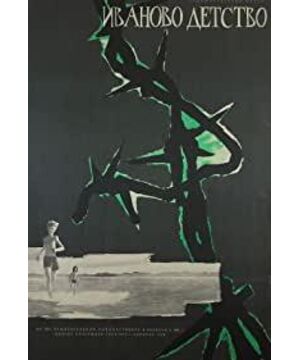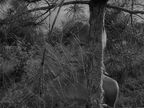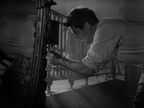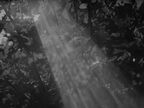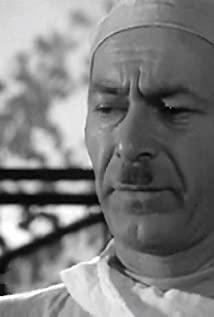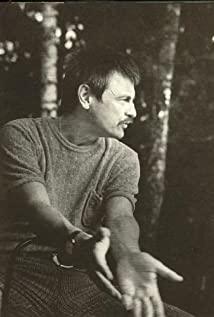The film is based on Bogomolov's novel. In the novel, the author described the war with the accurate and focused eyes of a prose writer. The novel adopts Khaltsev's first-person pronoun, which is flat and straightforward. Tarkovsky decided to add Ivan's dream to the film. He wants Ivan to live on the screen in two sets of shots: one is the real world, where he is a scout, performing combat missions; and the other is the world of his dreams and memories . Tarkovsky used film language to write a poem on the screen: a tragic poem about "Ivan's Childhood" that was devastated by war. This poem shows what this childhood has become after encountering war; it also shows what it would be like if there were no wars.
The image of Ivan is not the adopted "son of the team" type soldier who is usually on the screen wearing appropriate small uniforms and leather boots, but a dark face, trembling, scars on his back, and trembling. And the little boy with clacking teeth.
The war destroyed the childhood of Ivan's generation. Ivan has been weather-beaten and has become precocious and deep. He has lost the innocence and faith of children. Only in dreams can he restore the concept of light in life.
In the dream, Ivan exists as a free and complete person. He is connected with the beauty of nature, the beauty of human emotions and the whole beautiful life. Here, everything is understandable, beautiful, and brilliant. In reality, Ivan only exists as an avenger, as a weapon. The wounds he suffered from the war were heavier than others, and his hatred of war was deeper than others. Although the officers in the army wanted to send him to the Suvorov Military Academy to study in order to love him, they did not understand: only when Ivan took revenge as he understood, his heart would be calm. Come down.
The war in the film is the war seen through Ivan’s eyes. The image of war and violence is the only and absolute reality for Ivan. Only in his sleep can he get rid of their fetters.
The scene of Martha and Holling inserted in the film is not at all for "the scene is not enough, use love to make it together", but to show the destruction of human nature and normal human feelings by war. Holling and Martha are kissing on the trench. This image symbolizes that they are kissing by the grave. Their love will have no results in the harsh war years. It is hopeless. It is like playing with fire. Holling called Martha over and immediately told her to go away. His restraint showed that he was fully aware of the danger of this kind of love.
The "Dance of Birch Trees" scene reminds people of an irresistible "toadstool wind", and the characters in the film seem to be in this whirlwind. This beautiful, pure, wild birch forest has no branches and leaves, and it looks cold and harsh. It was the film crew who spent a long time choosing more than a dozen jungles and finally found this location in the suburbs of Moscow.
The last dream of Ivan is profound, and it is by no means a "bright end" of the film. This dream was seen after the audience knew that Ivan was executed. Ivan’s actual destiny was hanged, and this dream showed that if there were no wars, Ivan could have such a good life. This dream left people with infinite melancholy.
The film uses specific images to portray the image of war and the image of the ravaged Russian land. In the last scene, that is, in Ivan's last dream, the children are playing on the beach. Everything is so pure and so radiant, except that there is a charred tree standing on the beach by the water. Ivan and a little girl chased and ran into the water. At this moment, the charred tree flashed in the screen, and a gloomy, dim sunlight enveloped it. This metaphorical picture is very expressive for people to see: a dead black tree is erected on Ivan's road.
The end of the plot is based on a news documentary. In the ending of Tarkovsky's film, it is easiest to see his technique and way of thinking, and the ending often makes him unreservedly show himself. The plot of the feature film suddenly got into the historical news documentary showing the conquered German parliament. A set of shots of the Capitol is the first crowd scene in the film. Before this, the plot involved was very limited. Only those people related to Ivan appeared on the screen, people who had appeared in front of Ivan, people who had sent him to perform tasks or greeted his return. The only mass scene in the film is documentary, that is, historical. Ivan is making a comparison with history. Here, one can see the scale of the film and its tragic passion. It should be said that the death of a little boy who lost all his relatives and threw himself into the cruel struggle to avenge the fascist occupiers is enough to arouse people's strong feelings and will not make people feel uncomfortable with tears. Sorry. But whether it is in this film or other films, Tarkovsky does not want to make people cry. Every time, what he got from the audience was not tears, but the same feelings and understanding of him. Thinking of the fate of Little Ivan, the audience feels a kind of unbearable pain, but this kind of discomfort is not sad. Ivan is a one-and-one man. He adapts himself to the war. However, after he dedicated everything to the war, even if he was not hanged by the fascists, he could not continue to live after the war.
The passion of "Ivan's Childhood" is tragic: the death of the little boy is portrayed as a human disaster. Of course, this performance will only strengthen the film's anti-fascist tendency.
Tarkovsky gave this common storyline rich and profound connotations. In the film, his own views are extremely clear and active. Therefore, "Ivan's Childhood" is an example of the "author's film" that emerged in the West at that time. The film is an innovative work in terms of ideological connotation and artistic expression.
Tarkovsky was born in 1932 and graduated from the Directing Department of the Soviet Film Academy in 1961. The graduation project "Road Roller and Violin" won the first prize in the University Student Film Competition in New York. "Ivan's Childhood" is his first film after graduation and his famous work. In 1967 he filmed "Andrei Rublev", which won an award at the Cannes International Film Festival in 1969. Later, he filmed "Solar System", "Mirror", and "Stalker". In 1983, he directed "Nostalgia" in Italy. After that, settled abroad. In 1985, he directed "Sacrifice" in Sweden and won the Grand Prix at the Cannes International Film Festival. His films have deep connotations, showing the relationship between man and nature, society and history, as well as the various contradictions and conflicts in man's own deep consciousness. In his films, documentary techniques are well combined with romantic techniques, science fiction and reality, philosophy and lyricism. His artistic expression is originality. He died in Sweden in 1986. After his death, the Soviet Union re-screened all his films, thinking that his films have a unique director style, which expresses an objective world in the subjective feelings of the artist.
View more about Ivan's Childhood reviews


